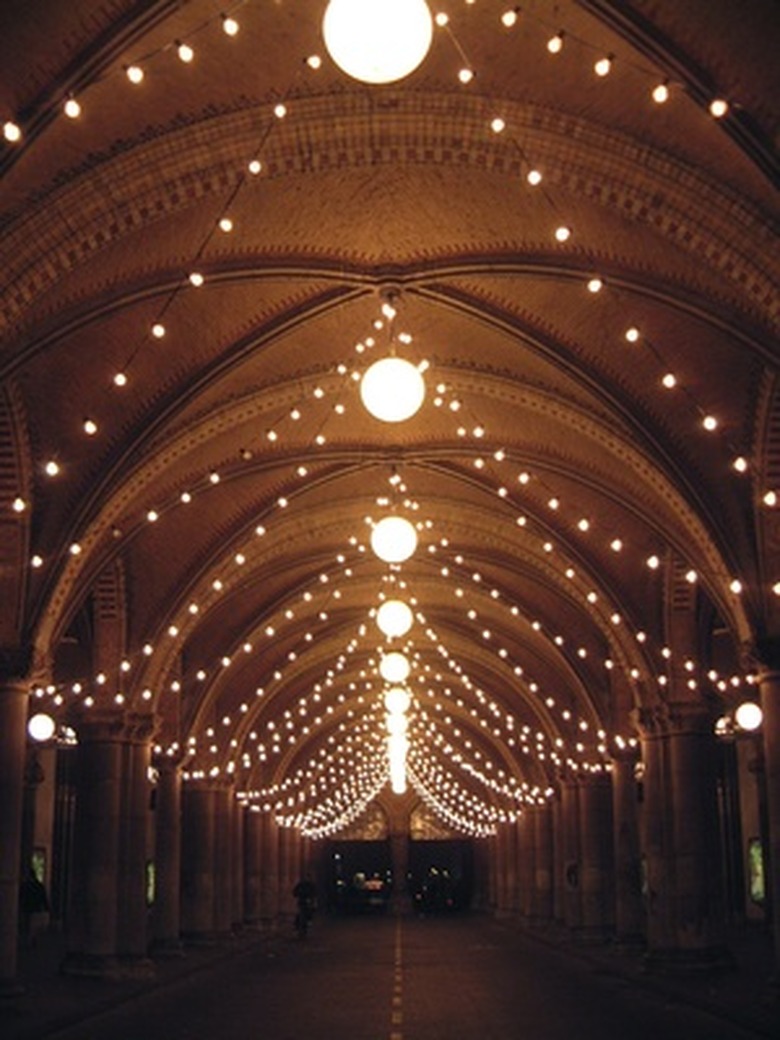How To Calculate Angles Between Two Lines
When two non-parallel lines cross, they create an angle between them. If the lines are perpendicular, they form a 90-degree angle. Otherwise, they create an acute, obtuse or other type of angle. Every angle has a "slope." For instance, a ladder against a wall has a slope whose value varies according to the angle of the ladder. Using a little geometry, you can compute the angle between two intersecting lines by determining their slopes.
Compute Slopes
Step 1
Draw two non-parallel lines on a sheet of graph paper. Label the lines "Line A" and "Line B."
Step 2
Draw a small circle at any point on "Line A." Note its x and y coordinates on the graph paper and call the coordinates x1 and y1. Assume that x1 is 1 and y1 is 2.
Step 3
Draw another small circle at another location on the line. Note the coordinates, and call them x2 and y2. Assume that x2 is 3 and y2 is 4.
Step 4
Write down the following slope equation.
Slope_A = (y2-y1)/(x2-x1)
Plugging in the sample values for the coordinates, you get this equation:
Slope_A = (4-2)/(3-1)
The value for Slope_A is 1 in this example.
Step 5
Repeat these steps and compute the slope of "Line B." Label that slope "Slope_B." For this example, assume that the value for "Slope_B" is 2.
Compute Angle
Step 1
Write down the following equation:
Tangent_of_Angle = (SlopeB – SlopeA) / (1+SlopeA*SlopeB)
Step 2
Perform the calculation. The equation looks as follows using the values computed in the previous section:
Tangent_of_Angle = (2-1) / (1+1*2)
In this example, the value for "Tangent_of_Angle" is 0.33.
Step 3
Use the trigonometry table to find the angle whose tangent is "Tangent_of_Angle" as computed previously. If you look up the example value, 0.33, you discover that its corresponding angle, to the nearest 10th of a degree, is 18 degrees. The angle between "Line A" and "Line B" is 18 degrees.
TL;DR (Too Long; Didn't Read)
If you do not have a trigonometry table, you can find one online.
Cite This Article
MLA
Lee, Kevin. "How To Calculate Angles Between Two Lines" sciencing.com, https://www.sciencing.com/calculate-angles-between-two-lines-7863718/. 24 April 2017.
APA
Lee, Kevin. (2017, April 24). How To Calculate Angles Between Two Lines. sciencing.com. Retrieved from https://www.sciencing.com/calculate-angles-between-two-lines-7863718/
Chicago
Lee, Kevin. How To Calculate Angles Between Two Lines last modified March 24, 2022. https://www.sciencing.com/calculate-angles-between-two-lines-7863718/
